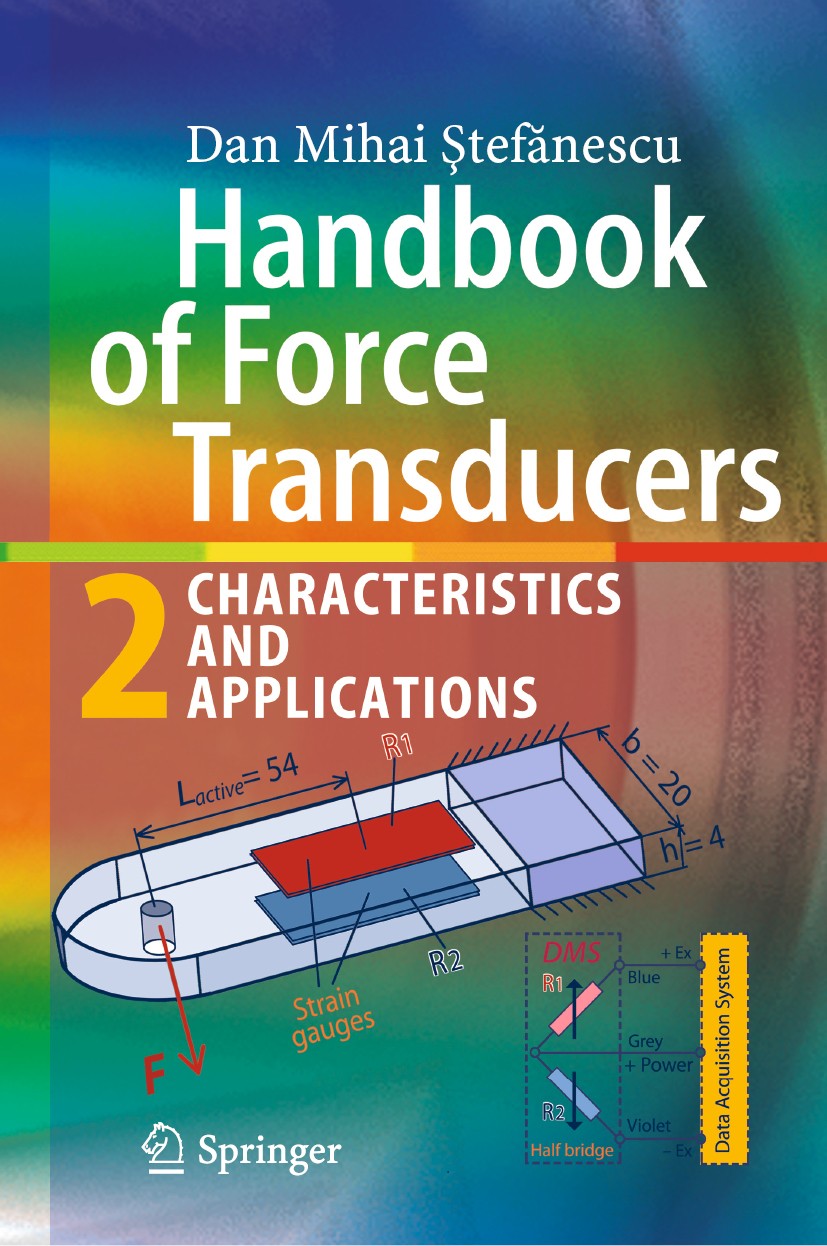| 书目名称 | Handbook of Force Transducers | | 副标题 | Characteristics and | | 编辑 | Dan Mihai Ştefănescu | | 视频video | http://file.papertrans.cn/422/421343/421343.mp4 | | 概述 | Complementary handbook for engineers, technicians, students and practitioners, providing a good deal of up-to-date information.Complete book in handbook style.Second volume of the successful “Handbook | | 图书封面 |  | | 描述 | .Part I introduces the basic “Principles and Methods of Force Measurement” according to a classification into a dozen of force transducerstypes: resistive, inductive, capacitive, piezoelectric, electromagnetic, electrodynamic, magnetoelastic, galvanomagnetic (Hall-effect), vibrating wires, (micro)resonators, acoustic and gyroscopic. Two special chapters refer to force balance techniques and to combined methods in force measurement..Part II discusses the “(Strain Gauge) Force Transducers Components”, evolving from the classical force transducer to the digital / intelligent one, with the incorporation of three subsystems (sensors, electromechanics and informatics). The elastic element (EE) is the “heart” of the force transducer and basically determines its performance. A 12-type elastic element classification is proposed (stretched / compressed column or tube, bending beam, bending and/or torsion shaft, middle bent bar with fixed ends, shear beam, bending ring, yoke or frame, diaphragm, axial-stressed torus, axisymmetrical and voluminous EE), with emphasis on the optimum place of the strain gauges. The main properties of the associated Wheatstone bridge, best suited for the parametri | | 出版日期 | Book 2020Latest edition | | 关键词 | force transducer; strain gauge; electrical methods; measurement; elastic elements; mechanical testing; Whe | | 版次 | 2 | | doi | https://doi.org/10.1007/978-3-030-35322-3 | | isbn_softcover | 978-3-030-35324-7 | | isbn_ebook | 978-3-030-35322-3 | | copyright | Springer Nature Switzerland AG 2020 |
The information of publication is updating

|
|
 |Archiver|手机版|小黑屋|
派博传思国际
( 京公网安备110108008328)
GMT+8, 2025-12-30 08:28
|Archiver|手机版|小黑屋|
派博传思国际
( 京公网安备110108008328)
GMT+8, 2025-12-30 08:28


